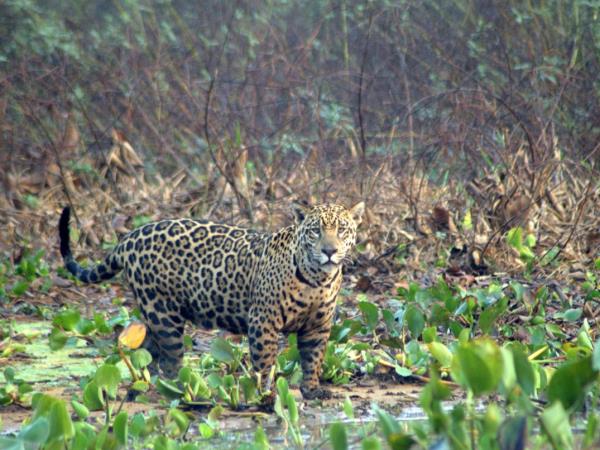Big cat tourism in South America can help jaguars
Posted on
|
There's some interesting research come from the University of East Anglia about big cat tourism. The overall message is that if we visit to see the jaguars, we will help them. Every year, thousands of tourists flock to the Pantanal, an area which spans Brazil, Bolivia and Paraguay. They want to see the big cat - the jaguar, who can be pretty elusive. The Pantanal is widely considered to be the best place to see jaguars in the wild. Most tourists come to see jaguars, the Giant Otter, Anaconda, Marsh Deer, Giant Anteaters and water birds. The World Land Trust is based in the UK, and its partner, Guyra Paraguay, manage a 52,000 acre reserve in north-eastern Paraguay. It runs the Three Giants Biological Station on the reserve. The reserve, by the way, is named after the Giant Otter, Giant Anteater and the Giant Armadillo who are present around the station, which tourists can visit. Most tourists want to see jaguars; animal tracking marks such as footprints are often seen. Even though Jaguar sightings are rare, they are frequently caught on trail cameras.
The jaguar is also at odds with local farmers, for killing their livestock and who consequently resent this big cat. Some farmers even go so far as to hire bounty hunters to kill off problem cats. A research team from UEA, the Federal University of Mato Grosso, and Panthera, the cat conservation group, looked at the human-wildlife conflict. They studied the area of Porto Jofre. Here, ecotourism lodges and working cattle ranches work side by side. Researchers discovered that the annual revenues gained from watching jaguar tour packages were more than US$6.8 million. However, in the same area, the damage to livestock was US$121,500. Furthermore, the researchers interviewed ecotourists in the area. 98% would be willing to pay an extra fee to compensate ranches for the cattle they lost to jaguars. A considerable 80% were willing to give 6% of the tour package costs. Professor Peres said: “The discrepancy between the financial benefits and costs of retaining jaguars provides a huge window of opportunity for the conservation of this flagship cat and many other species of the increasingly embattled Brazilian Pantanal.” In short, there is monetary value in keeping a good number of jaguars in the Pantenal. Best practice in cattle herd management can also help reduce losses to farmers and ranchers. And tourists can help by looking to select tourism operators that work with local people to benefit the community and reduce any human-wildlife conflict. Interestingly, the Snow Leopard Trust has set up a compensation scheme to help those farmers who livestock are killed by snow leopards, and also to help the farmers better manage their herds. And it seems to be working. I just feel sorry for the livestock. |
